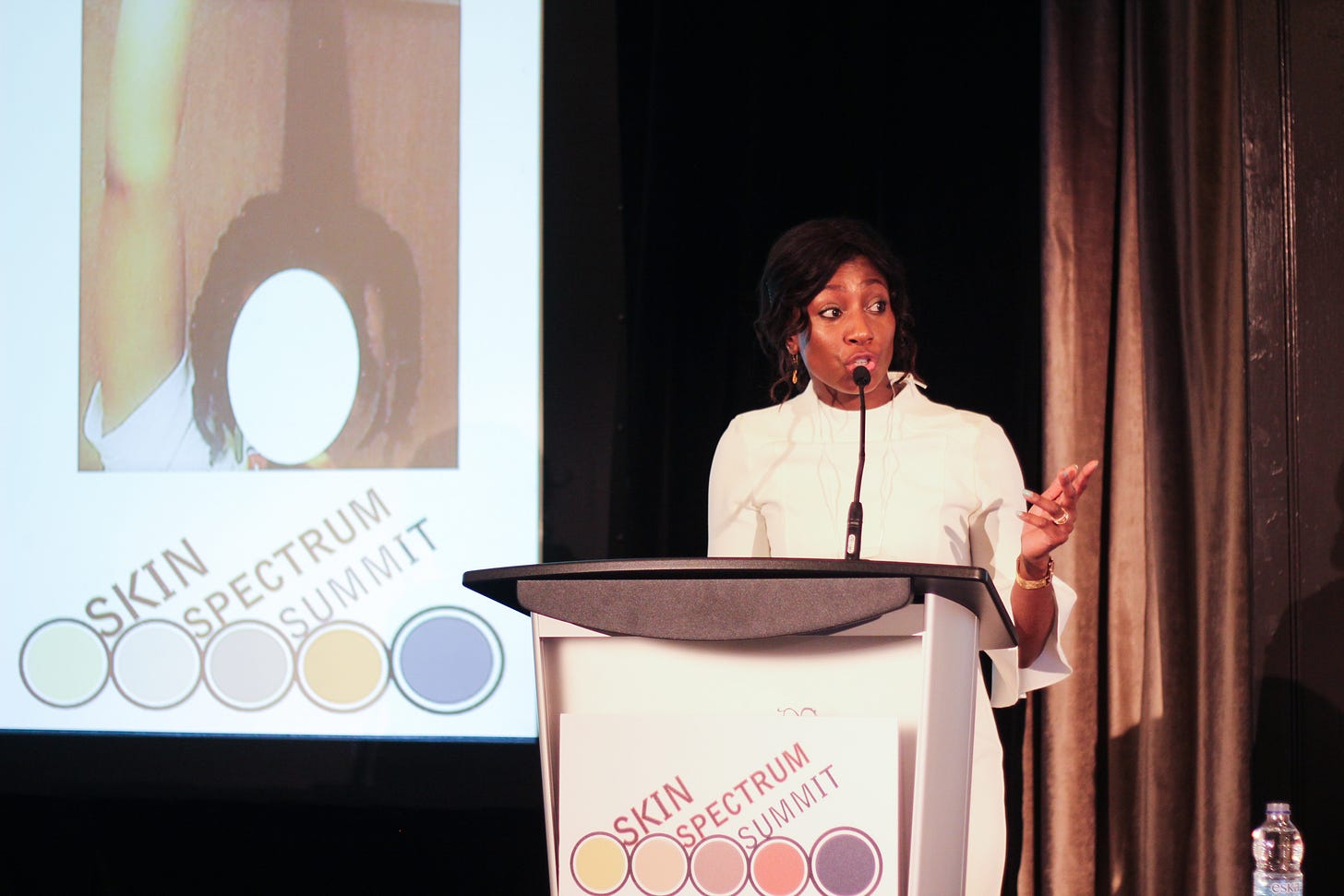Skin conditions look different in darker skin
Dr. Joël Claveau on important differences to look for when making a visual diagnosis of inflammatory disease in darker skin (640 words, 3 minutes)
Inflammatory skin conditions can present differently in skin of colour, which can make morphology-based diagnosis challenging in these patients. Changes are often subtle in darker skin said Dr. Joël Claveau, in a presentation at the 2020 virtual Skin Spectrum Summit.
As well, there are limited educational materials describing the differences in how these conditions appear in different skin types. This has resulted in misdiagnoses, he said.
“We must admit that there is not a lot in the literature on people with skin of colour, on black skin, and not a lot in our textbooks,” said Dr. Claveau, a dermatologist in practice in Quebec City and an associate professor of dermatology at Laval University, Quebec City. “We do not teach [about differences between skin types] enough to physicians and dermatologists.”
Erythema, for example, may barely be perceptible in dark skin, Dr. Claveau noted.
“For most of the inflammatory diseases, in lighter skin, we have characteristic erythema. And often, we teach dermatologists to learn the small, subtle changes between rose, pink, red, or orange colours. This is more difficult in darker skin. [Erythema] can be blue, grey, orange, brown. So the changes are different.”
Other factors to consider in inflammatory diseases in darker skin include:
Post-inflammatory pigment change will be more common in darker skin
The risk of pigment change is related to the severity of the inflammation
Counsel patients that pigment change in the dermis can be more difficult to correct than epidermal changes
Lichenification is a more common feature of inflammation in darker skin
The takeaway:
Inflammatory skin conditions look different in darker skin types. Physicians should learn about these differences to be able to diagnose their patients more accurately and get better outcomes.
FROM THE LITERATURE ON INFLAMMATORY CONDITIONS IN SKIN OF COLOUR
Immune and barrier characterization of atopic dermatitis skin phenotype in Tanzanian patients
A study of atopic dermatitis (AD) patients in Tanzania has confirmed a difference in inflammation-related gene expression between patients with dark skin and those with lighter skin. In darker skin, there are more issues with lipid metabolism. AD in lighter skin is more associated with epidermal barrier dysfunction. This means different treatments are needed for AD in darker skin.
Prurigo nodularis characterized by systemic and cutaneous T helper 22 immune polarization
A study of skin samples from patients with prurigo nodularis (PN) has identified a possible therapeutic target. The chronic inflammatory condition disproportionately affects Black people. Compared to healthy controls, samples from patients with PN showed more inflammation-driving interleukin-(IL)-22. Helper T-cells were the source of the extra IL-22. The study concludes that therapies that target this pathway could potentially help patients with PN.
Pruritus in Black skin: Unique molecular characteristics and clinical features
Black skin has several unique structural properties which contribute to the pathogenesis of pruritus, according to findings from a new literature review. These properties are in part why Black patients are disproportionately affected by chronic itching disorders such as atopic dermatitis, prurigo nodularis, HIV-related pruritic dermatoses, and cutaneous T-cell lymphoma.
Children with atopic eczema experiencing increased disease severity during the pollen season more often have hay fever at a young age and a dark skin type
According to new findings, children who experience eczema flares in the spring and summer months are more likely to have darker skin and hay fever. Approximately one-third of children with hard-to-treat atopic eczema experience most of their flares during the pollen season.
VIDEO: Altered skin microbiome improves eczema
AT THE INTERSECTION OF SKIN AND SOCIETY
Brampton, Ont.-based artist Chelsea Charles uses a combination of traditional and digital tools to create art celebrating Black women and Black hair.
She has produced work for many clients including Shameless Magazine, The Walrus, Canada's History: Kayak Magazine, The Marshall Project, ESPN, Zora, The Washington Post, Globe and Mail, LA Times, and THIS Magazine.
In a report from the CBC's Sketchbook series of artist profiles, Charles explains that she had read an article that outlined actress Monique Coleman’s negative experiences with a production’s hair department. In particular, there were problems that arose due to the hair department's lack of experience with Afro-textured hair.
“It pushed me in doing a project about Black women and Black hair because I often find that it is under-represented in media,” Charles said in the CBC report.
A portfolio of Charles’ illustration and design work can be seen on her website, https://www.chelseacharlesillustration.com/
This Week
Tuesday, June 1 is International Children’s Day
Saturday, June 5 is National Health and Fitness Day
June is Canadian Men’s Health Month
Something to think about during the week ahead…
Next Week
Dr. Renée A. Beach discusses hair and nail conditions in all skin spectrums.
Skin Spectrum Weekly is launching the Skin Spectrum Podcast series, launching this summer. Please watch this space for more details. As always, we welcome your questions and comments on topics in Ethnodermatology.







